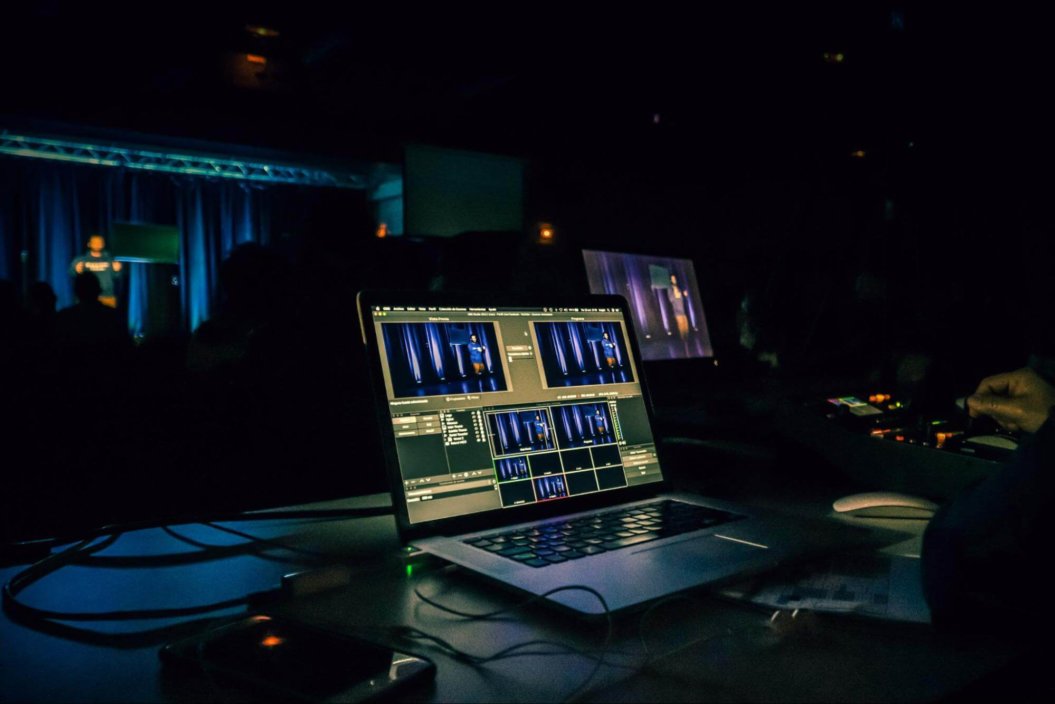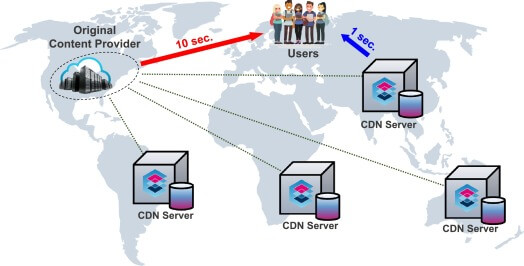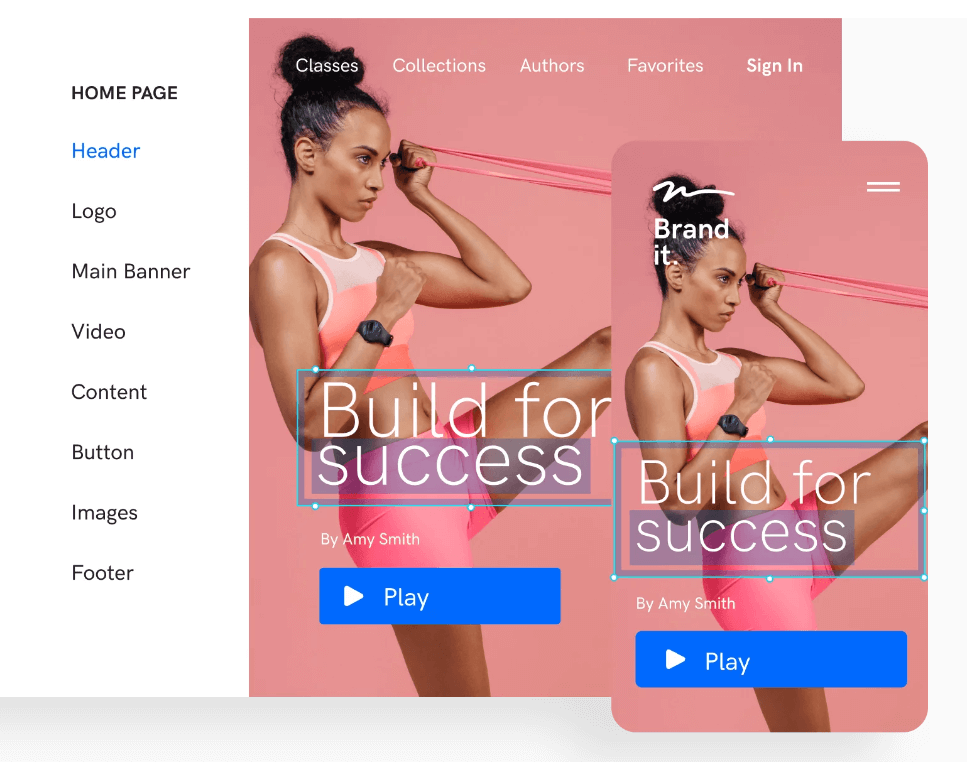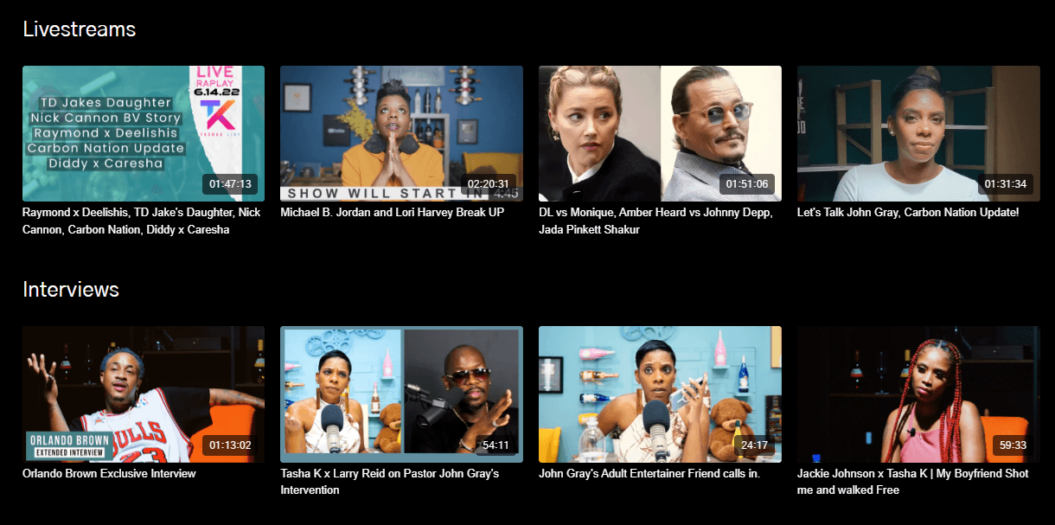

In the past, live streaming was only possible if you had the right hardware and software. Now, thanks to online platforms like YouTube and Facebook, anyone can share their live stream with the world.
But what if you want more control over your live streams? What if you want to run your channel on your own streaming server — without relying on any platform?
It sounds like a pipe dream, but it’s possible by setting up your own live streaming server!
In this guide, you’ll learn:
Let’s get into it!
In the most basic terms, a video streaming server allows you to send and receive live video content using your own server instead of a third-party service.

For example, if you’ve been live video streaming on YouTube, you’re using its media servers to deliver the content on your viewers’ devices, such as an Android or Apple.
They handle streaming protocols, content delivery across their network of streaming video servers, and more. The streaming process is packaged with little lifting on your part.
All of these things happen in the background and you get to skip making this decision.
Let’s talk about a similar process: publishing written content. If you’re a creator, you may have built your own website in the past.
Did you choose to use a third-party service like Wix or Squarespace? Or did you build your own website using open-source software like WordPress?
Most creators who have very limited knowledge and experience building a website will opt for drag-and-drop page builders, like Wix.
But if your someone who needs a video streaming option with more control over what they live stream, and want to avoid paying a monthly fee to maintain their site, it makes more sense to build their own live streaming website
The logic and process are almost the same. But this time, you’re looking to deliver videos live from your computer to your viewers.
Delivering videos live to viewers requires more technical know-how than building a simple website with images and text.
So, if you’re going this route, you need to understand why you’re going the DIY approach.
Before building your own video streaming server, you’ll have to dig deep and ask yourself why. When you focus on your motivation, you’re more likely to continue this path.
Now, there are a few reasons you might want to make your own server:
However, having full control and flexibility means you’ll also have a lot of things to think about, like security, updates, maintenance, and more.
And sometimes, as with any DIY project, things could go wrong.

Now that you know your requirements, you can start to look at the different options for servers.
There are a few things you’ll want to keep an eye out for. Make sure to choose a web server that…
…and other considerations for your specific media streaming requirements.
A popular option is NGINX Software, which is open-source. This means that the source code is available for anyone to use. It’s a great choice because it can run on popular operating systems like Mac OS, Windows, and Linux.
Most people use NGINX software because it’s…
…and offers other features that can help deliver high-quality live streams securely. RTMP is a video streaming protocol that was developed by Adobe back in the early 2000s. It’s been widely adopted by the online video industry due to its flexibility and performance.
If you need to use RTSP (Real Time Streaming Protocol), you’ll have to convert it first to RTMP before you can use it with NGINX.
You can learn more about streaming protocols from our full RTMP guide.
One thing to note is that NGINX can be a little tricky to set up. However, there are plenty of tutorials online that can help you get started.
So if you’re looking for a more reliable and powerful web server, NGINX is a great choice.
Here’s a step-by-step tutorial on which NGINX files to download and install:
Choosing an open-source web server has its pros and cons, so it would serve you well to do more research.

By delivering content from multiple locations worldwide, a CDN can offer a consistent experience to viewers wherever they are located.
When combined with live streaming software, a CDN can provide a reliable and scalable way to reach a global audience. CDNs achieve this by caching content in data centers that are closer to the user’s location.
If you’re live streaming from the US but your viewers are in the Philippines, the quality of the playback is still in high resolution. It also reduces latency. So, there will be fewer instances when the stream is buffering.
There are many different CDNs available, so it’s important to choose one that offers the features and flexibility you need.
Of course, on the top of the list is AWS (Amazon Web Services), but using it could get very expensive.
Here are other CDNs to choose from:
Note that these services may offer free versions, but as you access more features, the pricing can vary.
Once you’ve selected a CDN, you’ll need to configure your live stream to use it. This process will vary depending on your streaming software.
You can always refer to the CDN’s Knowledge Base or FAQ for specific instructions on how to set up the CDN with your web server. For example, Bunny Stream has an excellent documentation system and support.
While you will be saving hundreds or possibly thousands of dollars each month using open-source software like NGINX and OBS, you’ll have to clock in tons of hours configuring all of your setups.

Plus, if you want to grow a full-scale video business that makes both your live and pre-recorded content available on all devices, we can make that happen too.
You can easily offer recorded live streams as videos as part of a subscription or sell them separately on your very own on-demand video channel. It’s like having your own video server for all types of video stream options.
Since you’re a budget-conscious business owner, you’ll be glad to know that Uscreen has:
Take TashaK Live, for example. Tasha K is a blogger and YouTuber who streams content about the latest celebrity news.

Her streams can be accessed live from anywhere and from any device made possible by Uscreen. All of her streams are available for replay as part of her entire video library.
Instead of building her server from scratch, she and her team focus on creating high-quality content and serving her community.
It’s simple with Uscreen.Build, launch and manage your membership, all in one place.
At the end of the day, it’s all about resources and priorities.
If you’re confident in your technical knowledge and skills, you should go and make your own video streaming server.
In summary, you should:
If your goal is to focus more on content and grow your revenue, Uscreen is the best alternative. It provides an all-in-one solution that is flexible and scalable.
A video streaming server is a web server with built-in RTMP capabilities for broadcasting live streaming video or on-demand video to viewer’s smart TVs, computers, or smartphones.
How does a video streaming server work?A video streaming server captures video and audio from a source, like a computer, and transmits both to viewers on devices like smart TVs, computers, and smartphones.
How much does a video streaming server cost?Video streaming server costs vary, depending on the costs of hardware which start from around $1500 upwards. You’ll also need to consider the running cost of owning a live streaming server, such as electricity, cooling systems, and monthly bandwidth fees.
Do you need a server to stream?You need a live streaming server of your own if you’d like more control over your content. Most video video on-demand platforms can, and do, sensor content, and may also remove it based on usage policy requirements. Owning a live video streaming server can circumvent these challenges. But no, you don’t NEED your own streaming server in order to stream. Check out Uscreen as an alternative that still gives you control over your content.
Do I need a streaming platform to stream?You need a streaming platform to stream if you choose to not create your own video streaming server. Streaming platforms like Uscreen come with complete control for creators, offer a range of features designed to make it easier to get your content out to your fans and focus on creating and not the technical aspects of video streaming servers.
How do you make your own video streaming server?You can start a live streaming server by following these steps:
– Choose an open-source server.
– Choose your streaming software.
– Set Up A Content Delivery Network (CDN).
Building a live streaming server can take a couple of hours to complete. The time it takes to complete the build will depend on your understanding of key concepts.
Do I need a streaming licence?While you are not required to obtain a broadcaster license for personal live streams (live streams that don’t include commercial or public events) it’s best if streamers obtain permission for copyrighted material and understand fair use principles to avoid copyright infringement.
Respecting privacy rights is essential, including obtaining consent from individuals featured in streams and being cautious about filming in private locations.
What are the requirements for a live streaming server?Requirements for a live streaming server include:
– A capable CPU for handling large amounts of tasks.
– Enough RAM to handle simultaneous streams.
– A robust hard drive for storing and quickly and easily accessing stream content.
– Sufficient port size that allows maximum bitrate for the best possible video quality.
Yes, you need streaming software to create your own streaming server. It’s part of a streaming setup. and streaming software will be installed on your video streaming server’s operating system.
Share this post About the authorNick is CTO at Uscreen - the main magician behind this powerful platform. He's also the world's #1 super dad.